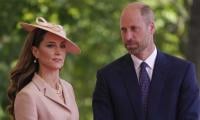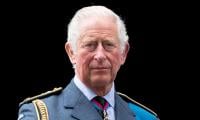The verdict of history
Kargil was not a tactical move but a sheer misadventure of General (r) Pervez Musharraf, reveals a well-researched and nonpartisan book by fellow journalist Nasim Zehra.
Usually it takes decades to obtain the verdict of history on controversial matters like war, where the truth remains warped due to intrigues and biases. But thanks to Nasim Zehra, who worked patiently but assiduously to sift fact from fiction, this verdict on Kargil has come in just two decades. Now we can, as Gen (r) Mian Ghulam Mustafa has wisely suggested, use this verdict of history to review our mistakes and make sure that we don’t repeat misadventures like Kargil (1999) and Operation Gibraltar (1965).
Kargil wasn’t just another conflict between India and Pakistan. It exposed the decision-making problem within the Pakistani state on serious matters like war. Only General Musharraf and a coterie of generals, as Nasim Zehra has suggested in her book, knew about the war plan. Other generals and air and naval commanders, and the civilian leadership were unaware of the plan and its ramifications. Even if the political leadership was briefed about Kargil, it wasn’t more than a mere eyewash.
Gen Musharraf, in an interview to Daily Times, responded to my book ‘Ghaddar Kaun?’ (The Traitor Within: The Nawaz Sharif Story in His Own Words). Sharif had openly criticised the Kargil adventure and claimed that he was never briefed about it as prime minister. However, Musharraf, in his book ‘In the Line of Fire’, and in his interviews, claimed that he had briefed the prime minister on the plan before it was acted upon. Sharif gave me a transcript of a secret call between Gen Musharraf and his chief of general staff Gen Aziz during the former’s visit to China. This conversation, which has been printed in my book, showed that the prime minister was kept in the dark about the Kargil adventure.
One of our leading political lights, Dr Shireen Mazari – in her 2003 book titled ‘The Kargil Conflict, 1999: Separating Fact from Fiction’ – tried to explain the Kargil phenomenon. Her conclusions were different from Nasim Zehra’s. Dr Mazari and Gen Musharraf have almost the same views on Kargil: that the PM was briefed prior to the action, but he crumbled under international pressure. Otherwise, Kargil could have been a great military victory. But Nasim Zehra has proved, through research, background interviews, maps and other vital inside information, that Kargil was an ill-planned move, which was doomed to failure from the start.
The most tragic and shameful consequence of the Kargil attack was when Gen Musharraf disowned the bodies of martyred Pakistani soldiers. According to Nasim Zehra, the Pakistani embassy in India officially denied receiving the bodies just so they could pretend that they were the remains of Kashmiri freedom fighters and show that Pakistan had nothing to do with the Kargil conflict. Quite surprisingly, these martyred military men were later ‘owned’ and conferred the highest bravery awards by the military. The changing stance of the general and his coterie shows that all was not fair in this game and that their doublespeak even deceived the political leadership of Pakistan.
Mostly agreeing with the conclusions of Nasim Zehra’s book, I consider Kargil to be a prelude to the military coup of 1999. Nasim Zehra sees these two events as different episodes of the same story. She argues that a truce between Nawaz Sharif and Gen Musharraf had been negotiated and, as a consequence, Gen Musharraf was made to wear two caps – adding the ceremonial cap of chairman of the Joint Chiefs of Staff Committee to his all-powerful chief of army staff’s cap.
My contention, however, is that Kargil was undertaken with the intention of weakening and ultimately dislodging the political government. The people of Pakistan are emotionally attached with the Kashmir cause and the assessment was that any military victory in Indian Occupied Kashmir would instantly make Musharraf a hero of the nation.
The people initially viewed Kargil as a brave and daring act, which the weak political leadership was opposing. This perception was further promoted by the speeches in the garrisons. Even the ceasefire resulting from Sharif’s meeting with the then US president Bill Clinton couldn’t stop the propaganda that a weak political leadership had lost a military victory in Kargil at a meeting table in Washington. This perception weakened Sharif’s political government. Kargil is one of those examples that expose our institutional faultlines, even over matters as serious as war.
The law of nature is at work here too. The weak go under while the powerful stay on. Sharif was sent home and the major characters in that drama were the same as those who had orchestrated the Kargil affair. Nasim Zehra is cautious in explaining the goal of the Kargil War. But the events that unfolded later showed that Kargil and the coup were connected.
The writer is a senior journalist.
-
 Louis Tomlinson Knew Harry Styles Was Destined To 'take Over'
Louis Tomlinson Knew Harry Styles Was Destined To 'take Over' -
 Prince William Brings In Top Crisis Strategist As Royal Challenges Loom: Source
Prince William Brings In Top Crisis Strategist As Royal Challenges Loom: Source -
 Ben Affleck Jokes Tax Shock After Good Will Hunting Payday
Ben Affleck Jokes Tax Shock After Good Will Hunting Payday -
 Matt Damon Gets Candid About Standing By Ben Affleck During Tough Times
Matt Damon Gets Candid About Standing By Ben Affleck During Tough Times -
 Bebe Rexha Jokes About Asking Taylor Swift To Manage Her Career Amid Label Exit
Bebe Rexha Jokes About Asking Taylor Swift To Manage Her Career Amid Label Exit -
 How Prince Harry’s Security Fight Could Change His Royal Future? Source
How Prince Harry’s Security Fight Could Change His Royal Future? Source -
 Matthew McConaughey Finds It Difficult To Sit Through His Own Movies
Matthew McConaughey Finds It Difficult To Sit Through His Own Movies -
 Mark Ruffalo Makes Strong Political Comments At 2026 Golden Globes
Mark Ruffalo Makes Strong Political Comments At 2026 Golden Globes -
 Leonardo DiCaprio's Girlfriend Flaunts Stylish Dress After Golden Globes Age Joke
Leonardo DiCaprio's Girlfriend Flaunts Stylish Dress After Golden Globes Age Joke -
 Harry Styles Launches Secret Site, Fuels Comeback Speculation
Harry Styles Launches Secret Site, Fuels Comeback Speculation -
 Kate Middleton's New Approach Expected To Draw Criticism From Meghan's Camp
Kate Middleton's New Approach Expected To Draw Criticism From Meghan's Camp -
 Jennifer Lawrence Admits Feeling Nervous Over Taking New Step
Jennifer Lawrence Admits Feeling Nervous Over Taking New Step -
 Lee Cronin’s ‘The Mummy’ Drops Its Chilling First Trailer
Lee Cronin’s ‘The Mummy’ Drops Its Chilling First Trailer -
 Louis Tomlinson Reveals What Former 1D Members' Dynamic Is After Liam Payne's Death
Louis Tomlinson Reveals What Former 1D Members' Dynamic Is After Liam Payne's Death -
 Jacob Elordi, Ana De Armas Get Cozy During 2026 Golden Globes
Jacob Elordi, Ana De Armas Get Cozy During 2026 Golden Globes -
 Meghan Markle Turns Juvenile And Plans Half Bit Ruse: ‘She’s Trying To Get On Her Radar’
Meghan Markle Turns Juvenile And Plans Half Bit Ruse: ‘She’s Trying To Get On Her Radar’



